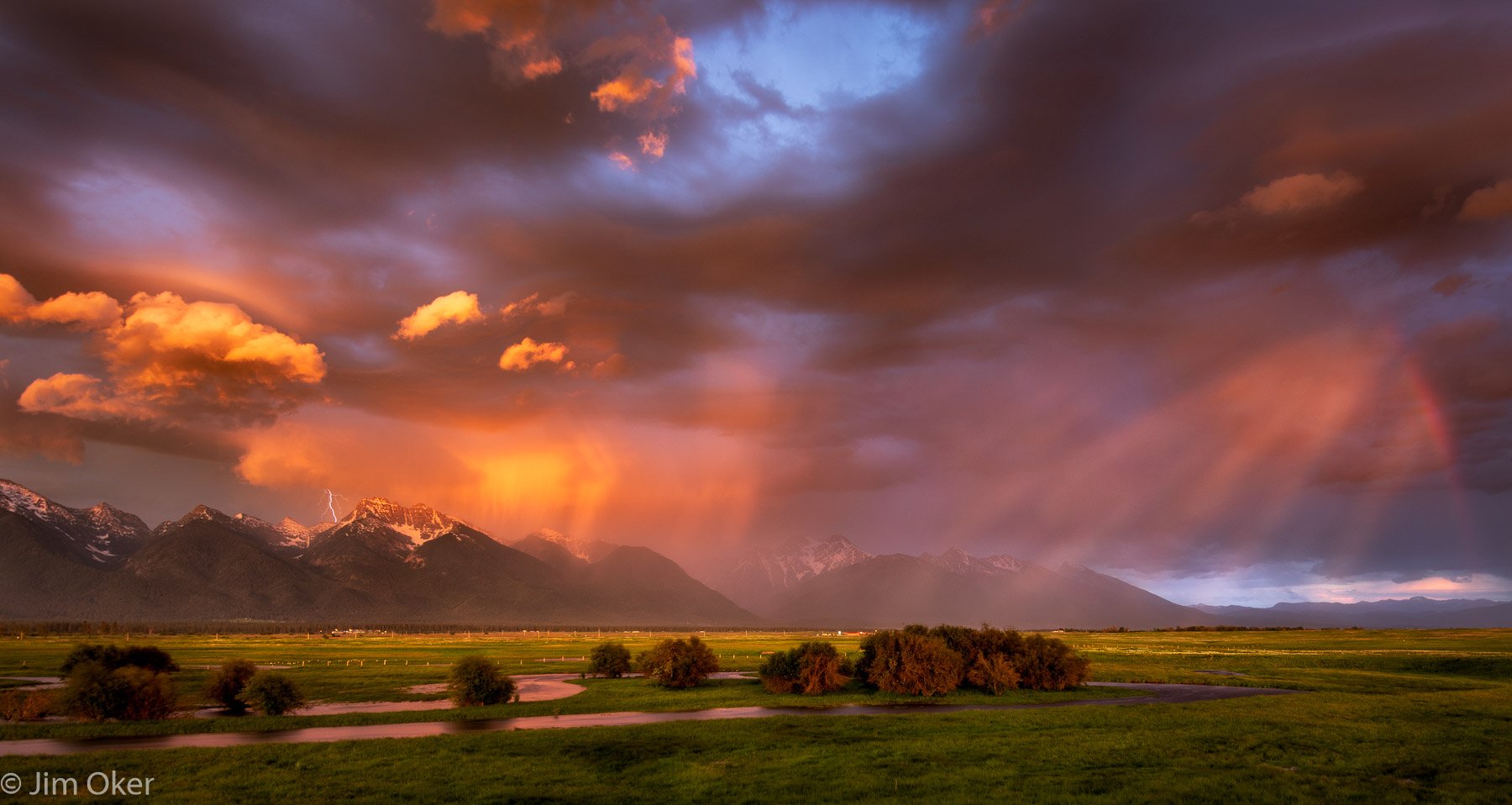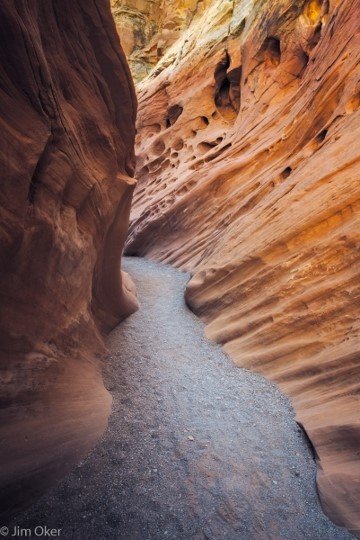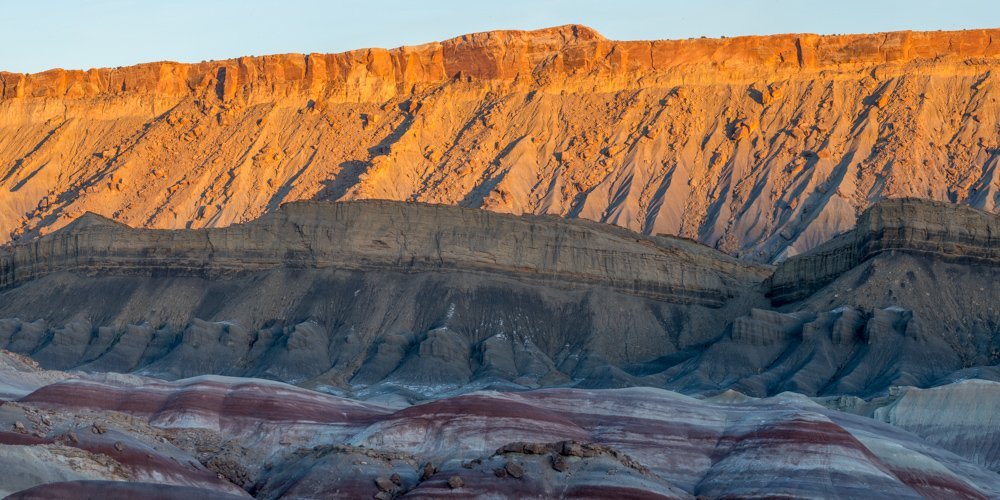-
Posts
466 -
Joined
-
Last visited
-
Days Won
5
Everything posted by Jim_Oker
-
One of the things I learned from my woodworking boss was to treat both sides of any panel the same way. If for some reason you wanted to finish the bottoms with polyurethane you should do both sides the same way. Otherwise you might get warping as humidity increases i don’t think it would add much of any strength to the drawer assembly though with I think was John’s goal with the glue (I question how much that adds also but I don’t see a harm in it)
-
Not really, with respect to the effects of longer term humidity, at least that's my understanding from my woodworking days (where we used a lot of spray on polyurethane and still paid attention to things like attaching table tops to aprons in such a way as to allow for expansion/contraction of solid wood tops). But that's a bit academic IMO, because as I noted (and is described numerically at the link I shared) plywood does not expand/contract very much with changes in humidity. It would help a bit with any spills or leaks as long as you catch them reasonably quickly.
-
On the glue or no glue - I would expect the drawer bottom to be dimensionally stable since it's a thin sheet of plywood, which has grain of the separate ply layers going in perpendicular directions. There is very little movement with changing humidity along the length of grain - it happens more so across/perpendicular to the grain - so plywood is kind of frozen in each dimension by the criss-crossing grain (it will have nonzero movement, but so small as to be generally not a consideration in typical joinery like this). Similarly, the front and sides of the drawer have their grain going parallel to the slots in which the drawer bottom fits. So I wouldn't expect those sides or the front to expand or contract significantly along the length of that slit. It's been a while since I built any drawers or otherwise joined ply into solid wood as is happening here, so I remain open to some solid explanation for why what John suggests would cause a problem, but based on what I recall my woodworking boss teaching me about designing joinery to handle wood movement (c. 1981-82), I think this should be OK. One reference I just found which has a decent explanation of wood movement with respect to grain direction edited to add: this is different from the case of a solid wood (ie not plywood) door panel that’s held by channels in the rails and stiles of the door, because the solid wood panel will expand and contract in the Direction that’s perpendicular to the wood grain and so needs room to expand into those grooves during high humidity (and enough width to not come out of the groove in low humidity) and if glued in place will tend to split after a few expansion/contraction cycles. Btw at the wood shop where I worked we often made tables with solid wood framed tops with plywood inserts that were well glued to the frames. Sometimes we covered the plywood with tile, sometimes with laminate (Formica or a cousin). This would be similar structurally to gluing the drawer bottoms to the front back and sides, at least from the perspective of response to changing humidity…
-
Yeah, if I hadn't had a pretty significant rehab job to do, I think I would have leaned more toward a device like the one you got. As you note, the trick is to keep up with the washing and waxing so you avoid needing to buff out oxidation in the first place! I learned my lesson with the van; of course now that I'm retired I'm less prone to let that sort of job go for years on end 🙂
-
Looks like you found a decent option but for folks who may still be hunting, here's what I got based on the advice in a few articles on Practical Sailor. The DeWalt buffer was enticing as it works even faster but also runs more of a risk of burns and swirl marks if you're not really on your game - I would want a LOT of practice before risking using one of those. Even this Shurhold buffer requires attention to not overdoing any one spot. I used this to compound out some bad oxidation on the gelcoat of the roof of our camper van and it did a great job of that. I also used it to buff out the paste wax i used on that as well as on our Oliver - it also worked well for that, though for waxing I think one of those one hand cheap harbor freight auto buffers would work fine and in some ways be a little easier to handle. https://www.practical-sailor.com/boat-maintenance/shurhold-shines-among-electric-buffers I would not hesitate to use this to compound/polish the Oliver when that's needed. On these threads Mr Miyagi will aways weigh in regarding the goodness of hand-done "wax on/wax off", of course! 😉
-
Another Andersen WDH idea
Jim_Oker replied to Nick and Linda Stratigakis's topic in Ollie Modifications
I too am interested in what the tension ratings are of that hardware, and what is required for safe use with the Anderson hitch (which clearly has to handle significant tension on those chains). -
Post your crazy insane gas prices and pump pics!
Jim_Oker replied to John E Davies's topic in General Discussion
Here's a nice image of the playa from early June or late May 2016 I think this is also from there, but am not positive -
Post your crazy insane gas prices and pump pics!
Jim_Oker replied to John E Davies's topic in General Discussion
What could possibly go wrong? 😃 Yeah, have heard that it's not cheap to get help recovering a vehicle there too. I know folks do get out there regularly around this time of year depending on where the water is but that you really have to be heads up about what the surface is like, and that it can change quickly as you move around. -
Post your crazy insane gas prices and pump pics!
Jim_Oker replied to John E Davies's topic in General Discussion
Did you drive out into the playa? I’ve seen some cool sunset and sunrise photos with dramatic cracked mud from there -
There goes the neighborhood. I knew the day was coming sooner rather than later, but have enjoyed the fact of big "dead zones" which are not super attractive to the growing hordes of "digital nomads" out here in the west. At least it will take a while for most folks to move from fancy LTE/5G antenna/booster/aggregation type setups to satellite...
-
Bath Furnace Was Not Blowing... No Wonder!
Jim_Oker replied to Nick R.'s topic in Mechanical & Technical Tips
What do you use to do the test, and what do you use to do the softening? thx -
Hull #709 - still plastic at least up to that point
-
A key and sometimes informative step in checking on what's up when plugging in to shore OR generator power and you're not seeming to get any of that power through into the trailer is to check the EMS (surge protector) remote display pane. In my 2021 E2 it's in the attic cabinet (the cabinet above the rear window) but I know they've moved this remote panel at least once so yours may be in a different spot. At any rate, if all is going well, that panel will show you the voltage, current, and cycle rate (hertz) of the power that's coming in from the external source. If it has decided that there's something wrong with that power and it's blocking it from getting into the trailer (the function of the EMS, with the goal of protecting the electrical components in the trailer) it will show and error code, which can be deciphered with the table of error codes in the EMS unit's manual (which should be bound in with the other manuals in the "standard features" book that shipped with the trailer (and which can be found on the Oliver site under Owners:University If that panel is not showing anything while you're plugged in, it either means the EMS is toast or more likely that power isn't making it there - i.e. a tripped circuit, a bad outlet, a bad cord, or a bad connection between the power plug on the outside of the trailer and the EMS.
-
Using the Notes App for your Travel Adventures
Jim_Oker replied to DavidS's topic in General Discussion
Great ideas. I will use some of these! I do a subset of this using the OneNote app on my phone, and I'll often add more at home from the desktop OneNote app. Among other things, I've created a "notebook" (which has sections/folders w/in it) for making notes on good boondock sites we've used, seen, or read about, as well as details on which sites at established campgrounds we'd like to try to book or grab on return trips, etc and have shared this with a few friends who can also add to it. We've included a "general resources" section in which we have lists of useful apps for different tasks (including things like tide tables/charts app, a "photographer's ephemeris" etc which can be useful for planning our days). It's a nice way of creating a shared store of the type of knowledge we're all apt to forget. -
Water pump not drawing water
Jim_Oker replied to Keith Kaiser's topic in Mechanical & Technical Tips
Another thought is to remove the inlet hose and inspect to see if it's filled with plastic shavings, which seems to happen on a fair number of Olivers. With sufficient blockage, it may be able to prevent the pump from drawing in water from the tank or boondock port. -
Water pump not drawing water
Jim_Oker replied to Keith Kaiser's topic in Mechanical & Technical Tips
Are the connections on either end of the inlet hose that attaches to the pump tight? If either of those is drawing air, you could get those symptoms. Also check that the strainer bowl on the pump is screwed on tight (and that it isn't cracked) - this is the clear plastic "bowl" with a metal strainer on the inlet side of the pump. Any air getting in on the inlet side via these spots could prevent the pump from drawing water from either the boondock port or the fresh tank. -
here's what Oliver has posted on their YouTube channel https://www.youtube.com/watch?v=rvg2zHEXcqM There are some other YouTube videos posted by other folks on maintaining Dexter axle bearings on YouTube that go a little more slowly and go into more detail that you may find helpful (search on "dexter axle bearing repack" on YouTube), and I also found this video which helped me understand this step which other videos went through too quickly for me to catch the importance of the "drag it across your palm" step https://www.youtube.com/watch?v=BhL1uAp_WCw
-
When I repacked my 2021 E2 bearings (hull #709), I found a heaping amount of grease still intact in the bearings/races and also a fair amount in the space between then, fwiw. Doesn't mean there wasn't a systemic issue that may have effected other units, but FTR I didn't see it on our trailer. As an aside this strikes me as a job that I'd be more than happy to pay a reasonsable fee to have someone else do for me in the future (not my idea of a fun day, and I don't think I'll ever get super efficient given how infrequently I'd ever be doing it), but I wanted to learn how this stuff all fits together and how to do this myself in case I find myself needing to replace bearings on the road (I didn't replace the cones/cups this time but I thin I'm pretty clear on how to deal with that part of the job and have the relevant tools along with spares for the travel kit).
-
I've been to Goblin Valley - definitely cool (see a few pics below, along with a shot of Little Wildhorse Canyon and a few from the very cool pre-Peuebloan Horseshoe Canyon pictographs across the highway and about 30 miles down a heavily washboarded road with a few intriguing sand drifts coming across for chuckles) - after a little memory refresh, the spot I was thinking of is often called "Moonscape Overlook" - see https://www.revesdailleurs.com/moonscape_factory_butte_en.html which looks like a cool spot to spend an evening. So many places to see, so little time!
-
Yes, I have that map and have noted that there are some routes I could do, as you say while not wet (I always carry enough water and food to hunker down for something like a week when out on roads that could shut me down if wet even if I see no rain in the forecast). Looks like it would be fun to be able to poke around a bit on the other roads though. I've been up I think it's called "Behind the Reef" road a little ways from near Hanksville (the photo below is from that afternoon/evening venture) - there's some cool stuff around there and I've just barely scratched the surface. I've seen some cool photos looking toward Factory Butte from some overlook on the SE ege. Etc etc
-
Thanks. That's about what I'd hoped - that I could get my Ford E250 van to the parking and walk the rest. That's among the spots I'd like to check out next time I'm around there. Sounds like it would be cool to go deep into the Swell sometime but probably best with a truck or jeep/rover-like vehicle.
-
Great photos from a cool zone. How was the road into the Black Dragon Canyon? Would a high clearance RWD van make it in there?
-
Report: Refrigerator on DC during travel with Platinum Package
Jim_Oker replied to VBistro's topic in Ollie Boondocking
No worries. Just wanted to point out that at least some owners needn't go to the step of adding a shunt to their system to get such info. But the notion of adding a shunt is a great piece of info for anyone who doesn't have this already built in.















